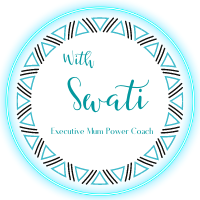
As a busy executive mum, balancing work and home can leave you with little time to manage the neck-related headaches and dizziness that are very common with a high-stress lifestyle. These symptoms can make you feel disoriented and fatigued, making it hard to stay productive and present in both professional and personal life. In this blog lets discuss some activities and habits to avoid and some key adjustments you can make to help alleviate dizziness and headaches.
Cervicogenic dizziness and headaches both originate in the cervical spine. The reasons for this can vary from a muscle spasm to disc issues to spinal stenosis to degeneration and much more. When the nerves that originate in the cervical spine are irritated or compressed, they can manifest as cervicogenic headache and cervicogenic dizziness. Here are some simple everyday activities to avoid or modify to manage these conditions better.
Mind Your Neck Posture:
Avoid lying down on the couch with your neck overly flexed by stacking too many pillows behind your head. This position can put undue strain on the cervical spine, leading to irritation of the nerves and possibly aggravating symptoms. Also holding the phone between your neck and shoulder can lead to muscle strain and nerve compression in the neck area. Instead, opt for hands-free options, such as using a headset or speakerphone, to keep your neck in a neutral, relaxed position.
Optimize Your Sitting Posture:
Sit back in your chair, ensuring that your lower back is supported, as this alignment in your lumbar spine helps maintain a neutral position in your cervical spine as well. You can use an external lumbar support if your chair does not have an inbuilt one. Keep your feet flat on the floor to reduce stress on the spine, which can indirectly impact your neck. Avoid leaning forward or slumping, as these positions increase strain on the cervical region, potentially worsening dizziness and headaches.
Watch this video to know if you have a good Sitting Posture?
Be Cautious with Repetitive Head Movements:
Repetitive head movements can trigger cervical headaches and dizziness. This can be common for those who use two monitors at work or move from one end of the desk to the other by twisting the torso. Instead of repeatedly moving your head or body, swirl your chair around to get to the other end of the desk or place the two monitors side by side so that you can pivot your gaze to view both the monitors. This helps reduce unnecessary tension in the neck, thereby reducing the chances of cervicogenic headaches and dizziness.
Avoid Looking Down for Long Periods:
Whether it’s working on your laptop or your phone, or reading documents, looking down for extended periods can lead to a forward head posture that puts a lot of strain on the nerves exiting the cervical spine, often aggravating both headaches and dizziness. Instead, bring screens or documents to about 5 to 10 degrees below your eye level. You might consider using a laptop stand or monitor riser to keep your head in a more neutral position.
Avoid lifting heavy objects such as heavy grocery bags, car seats with poor technique as this can strain your neck and back. If you need to lift, make sure to bend from your knees and keep the load close to your body, engaging your core muscles to protect your spine. Avoid twisting or bending your neck while lifting, as this can worsen cervical discomfort and related symptoms. Same goes for activities that require reaching overhead, such as placing items on high shelves or even certain cleaning tasks. Keep frequently used items at eye level or lower, and use a step stool instead of stretching your arms and neck upwards.
Avoid Prolonged Static Postures:
Sitting or standing in one position for too long, especially in a hunched or slouched posture, can put strain on your neck muscles and restrict blood flow, both of which can trigger headaches and dizziness.Take a short break every 30–45 minutes to stretch your neck, shoulders, and back with some simple desk exercises or standing up for a quick stretch can relieve tension and improve circulation.
HERE is a free video guide on "Quick and Easy Desk Based Exercises to avoid spinal & joint pain". These are simple and easy exercises that can be done in under 2-3 minutes while sitting at your desk at work or from the comfort of your home.
Get the course on "Simple Solutions to Manage your Cervicogenic Headache" HERE. This course offers practical, easy-to-implement proven strategies that actually work and have helped countless people to overcome their pain, regain energy, and fully engage with their families and careers.
If you like this blog and want to be notified about new blogs as soon as they are published, subscribe to my mailing list below.
I would love to see you around the internet! For other places you can explore more about me: https://withswati.com/page/link
Note: This blog contains affiliate links which will bless me and I will be able to help more people with spine and joint pain.
















0 Comments